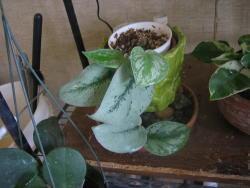Wonderful answer, Will. I do, in fact, grow crotons with no humidity tray and misting only now and then. I wonder why some plants that are so easy for many others, are almost impossible for me. And then again, I have luck with some that other people claim they cannot grow.
You have given me a boost of confidence. I didn't know that just about any plant can adjust to lower humidity. This Scindapsus aureus lost all its mature leaves when I first got it. I thought it was a goner. I read online that it requires high humidity. Well, the new leaves that were emerging must have adjusted well to my humidity, as they are doing fine, and it's been at least 6 months.

